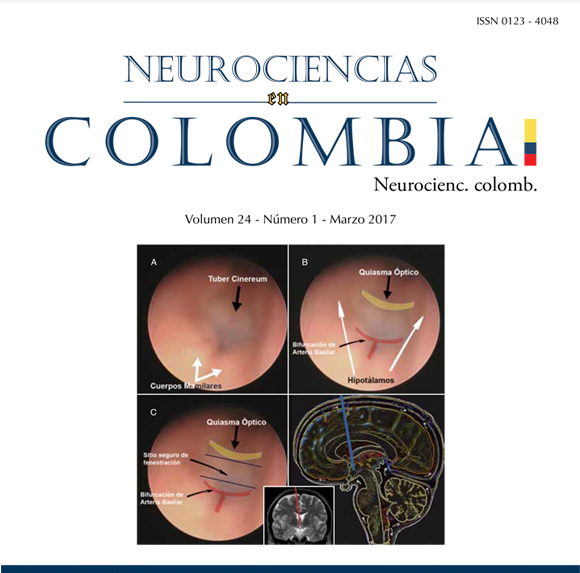Particularidades del trauma vertebro medular en niños
Revisión de la literatura
DOI:
https://doi.org/10.51437/nj.v24i1.14Keywords:
Trauma vertebromedular, Lesión de la médula espinal, Lesión de la médula espinal sin anormalidad radiológica, Trauma pediátricoAbstract
Resumen: El trauma es la principal causa de muerte y discapacidad en los niños mayores de un año de edad, si bien el Trauma Vertebro Medular (TVM)
pediátrico es una condición rara, afecta de manera importante al paciente, su familia y la sociedad.
Las lesiones congénitas y adquiridas de la médula espinal pediátrica plantean desafíos únicos debido a la naturaleza dinámica del desarrollo cognitivo y físico del niño en crecimiento y el impacto del TVM en este complejo proceso. La columna pediátrica es única en términos de estabilidad, patrón de lesiones, evaluación clínica, radiográfica y tratamiento debido a sus peculiaridades anatómicas, biomecánicas y fisiológicas.
En esta revisión, se proporciona una visión general del cuadro clínico, el diagnóstico y manejo del TVM pediátrico haciendo énfasis especial en las peculiaridades biomecánicas y fisiológicas de las que derivan dichas diferencias con el TVM en la población adulta.
References
Powell A, Davidson L. Pediatric Spinal Cord Injury. Physical Medicine and Rehabilitation Clinics of North America. 2015 Febrero; 26(1).
Alden TD, Ellenbogen RG. Spinal Cord Injuries. In Albright AL, Pollack IF, Adelson D. Principles and Practice of Pediatric Neurosurgery. New York: Thieme Medical Publisher, Inc; 2014. p. 925 - 939.
McGrory B, Klassen R, Chao E. Acute fractures and dislocations of the cervical spine in children and adolescents. The Journal of Bone & Joint Surgery. 1993 Julio; 75(7).
DeVivo M, Vogel L. Epidemiology of Spinal Cord Injury In Children And Adolescents. The Journal of Spinal Cord Medicine. 2004 Enero; 27(1).
Clarke E. Contrasting adult and paediatric traumatic spinal cord injuries. In Martin AA, Jones E. Spinal Cord Injuries: Causes, Risk Factors and Management. Primera ed. Estados Unidos: Nova Science; 2013. p. 251- 262.
Schottler J, Vogel LC, Sturm P. Spinal cord injuries in Young children: a review of children injured at 5 years of age and younger. Developmental medicine and child neuroogy. 2012 Septiembre.
Osorio M, Reyes M, Masaggli T. Pediatric Spinal Cord Injury. Current Physical Medicine and Rehabilitation Reports. 2014 Septiembre; 2.
Parent S, Mac-Thiong JM, Roy-Beaudry M, Sosa JF, Labelle H. Spinal Cord Injury in the Pediatric Population: A Systematic Review of the Literature. Journal of Neurotrauma. 2011 Agosto; 28.
Mathison DJ, Kadom N, Krug S. Spinal Cord Injury in the Pediatric Patient. Clinical Pediatric Emergency Medicine. 2008 Junio; 9(2).
Wang J, Nuccion S, Feighan J, Cohen B, Dorey F, Scoles P. Growth and development of the pediatric cervical spine documented radiographically. The Journal of bone and joint surgery. 2001 Agosto; 83A(8).
Fernandes J, de Almeida D, Jorge H, Patel A. Thoracolumbar Injury Classification and Injury Severity Score System: A Literature Review of Its Safety. Global Spine Journal. 2016 Febrero; 6(1).
Joaquim A, Ghizoni E, Tedeschi H, Batista U, Patel A. Clinical results of patients with thoracolumbar spine trauma treated according to the Thoracolumbar Injury Classification and Severity Score. Journal of neurosurgery. Spine. 2014 Mayo; 20(5).
Vaccaro A, Lehman R, Hurlbert R, Anderson P, Harris M, Hedlund R, et al. A new classification of thoracolumbar injuries: the importance of injury morphology, the integrity of the posterior ligamentous complex, and neurologic status. Spine. 2005 Octubre; 30(20).
Proctor M. Spinal cord injury. Critical Care Medicine. 2002 Noviembre; 30(11).
Rozzelle C, Aarabi B, Dhall S, Gelb D, Hurlbert J, Ryken T, et al. Management of Pediatric Cervical Spine and Spinal Cord Inuries. Neurosurgery. 2013 Marzo; 72(3).
Grabb P, Pang D. Magnetic Resonance Imaging in the Evaluation of Spinal Cord Injury without Radiographic Abnormality in Children. Neurosurgery. 1994 Septiembre; 35(3).
Vogel L, Betz R, Mulcahey M. Spinal cord injuries in children and adolescents. In Verhaagen J, McDonald J. Handbook of Clinical Neurology. Amsterdam: Elsevier; 2012. p. 131-148.
López Buedo AI, Ortega Rubio E, Perales Pardo R, Amores Valenciano P. Validación de la Regla Canadiense de la Columna Cervical para el uso de radiografías. Revista Clínica de Medicina de Familia. 2006 Febrero; 1(3).
Stiell I, Wells G, Vandeheem K. The Canadian C-Spine rule study for alert and stable trauma patients. Journal of the American Medical Association. 2001 Octubre; 286(15).
Vaillancourt C, Stiell I, Beaudoin T, Maloney J, Anton A, Bradford P, et al. The out-of-hospital validation of the Canadian C-Spine Rule by paramedics. Annals of emergency medicine. 2009 Noviembre; 54(5).
Kirshblum S, Campagnolo D. Spinal cord medicine. In Kirshblum S, Denise I. Spinal cord medicine. Nueva York: Lippincott Williams & Wilkins; 2011. p. 265-281.
Akbarnia BA. Pediatric spine fractures. Orthopedic Clinics of North America. 1999 Julio; 30(3).
Parente A, Navascués J, Hernández E, Sánchez-París O, Cañizo A, Cerdá J. Lesiones raquimedulares en la infancia. Cirugia Pediátrica. 2005 Marzo; 18(132).


